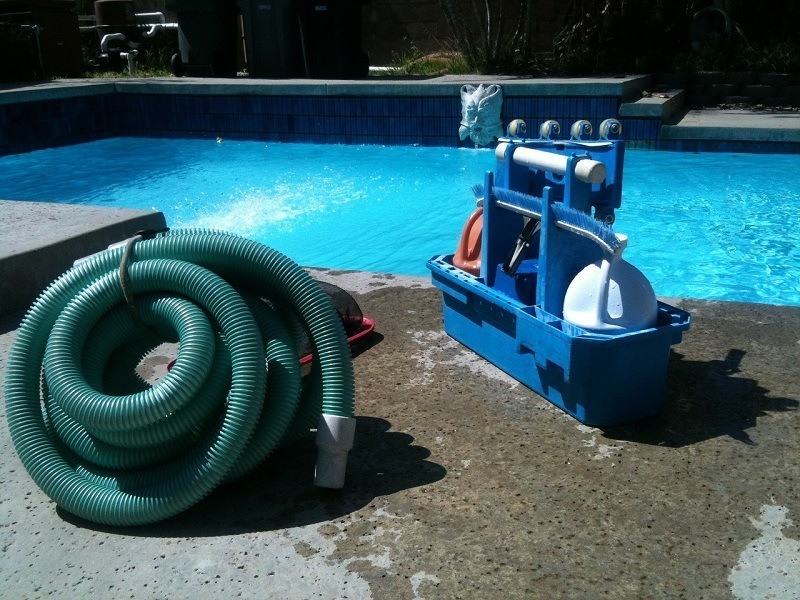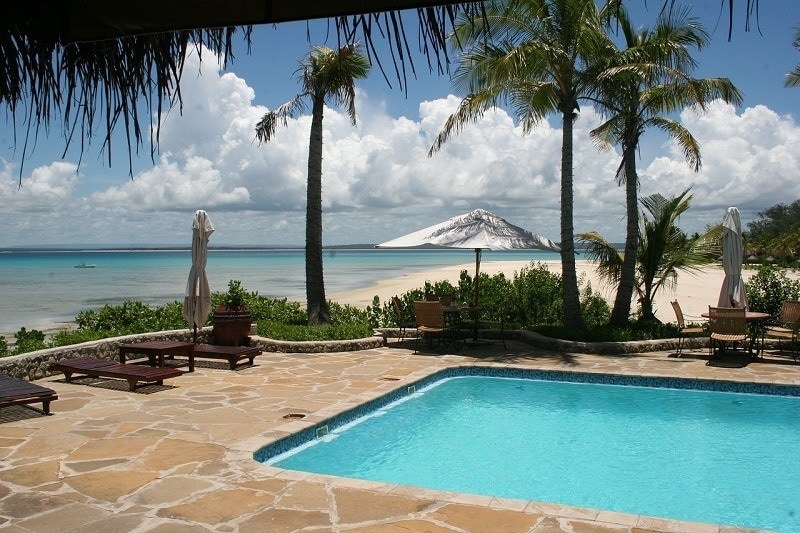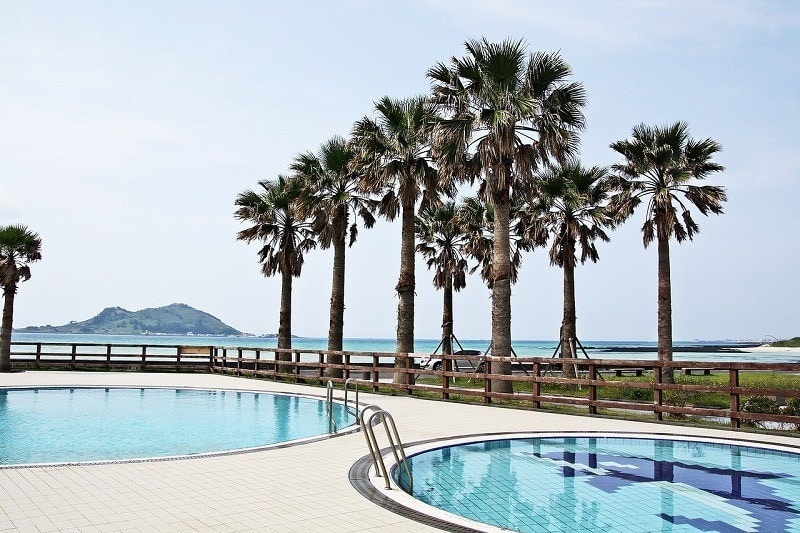How Long Should You Run Your Pool Pump For?
-
- Last updated:


Many homeowners are grateful for their swimming pools during the hot months of the summer. The convenience of a refreshing dip without driving anywhere or lugging heavy beach gear is often worth the expense and effort. However, it’s important to remember the real hero of the swimming pool – the pool pump.
Without the hardworking efforts of the pump, you would not have clean and clear pool water to swim in. That being said, figuring out how long to run it can be tricky if you don’t have some vital pool statistics, including turnover rate, pool volume, and pump size. Although you can opt for the “set it and forget it” option, it would end up being pretty hard on your wallet.
So, unless you are willing to pay astronomical amounts in energy bills, you’re advised to calculate your pool’s basic statistics. We have gathered all of the information you need to figure out your turnover rate, volume, flow rate, horsepower, and how chemicals can affect the pump time. What’s more, we will also share when the best time of day is to run the pump to save money.

Determine Your Turnover Rate
The turnover rate is the first bit of information needed. For those who are not a fan of calculations, this part of determining how long you should run your pool pump may be a bit stressful. Not to worry, however, as we have made it as simple as possible.
The turnover rate is the amount of time it will take for your pump to filter all of the water through your pool. To figure this out, you will need to know the volume of your pool. If you don’t have this information, it’s easy to calculate.
Rectangular Pool Volume

To begin, you want to measure the width, length, and average depth of your pool. As an example, let’s imagine a pool that’s 4 feet wide, 8 feet long, with a 5-foot shallow end/7-foot deep end depth.
Next, you want to multiply the width by the length to get the surface area.
4’ x 8’= 32 square feet
Then you want to calculate overall volume by multiplying the surface area by the average pool depth. This will give us the cubic feet. Before you do that, you have to find the median between shallow and deep ends. In this case, we have 5’ + 7’ = 12 (÷ 2) = 6.
32’ x 6’= 192 cubic feet
We need the number in gallons, so you want to then multiply by 7.5 because that is how many gallons are in one cubic foot.
192’ x 7.5’ = 1,440 Total Volume
Circular Pool Volume

The circular pool volume calculation is a little different. For this example let’s use a diameter of 10 feet and a 5-foot shallow end/ 7-footdeep end.
First, you will need to get the radius which is half of the diameter
10’ ÷ 2 = 5’ radius
Next, you have to get the radius squared and multiply it by 3.14 which is pi (p).
5’ x 5’ = 25 radius squared
25’ x 3.14 = 79 radius squared (rounded)
The next steps are the same as above. Multiply the radius squared by the average depth to get cubic feet.
79’ x 6’ = 471 cubic feet
Finally, multiply the cubic feet by 7.5 to the volume.
471 x 7.5 = 3,533 Volume
Finding the Turnover
Once you have the volume, the next step is to get the gallons per hour. To do so, divide the volume by 8.
3533 ÷ 8 = 442 GPH (rounded)
Keep in mind, most pool pumps use gallons per minute, so you may need to calculate further. All you have to do is divide the gallons per hour by 60 and you will have a flow rate.
442 ÷ 60 = 7 Gallons Per Minute Flow Rate.
To get the turnover rate, all you have to do is divide the volume by the flow rate. Then divide that by 60.
3533 ÷ 7 = 504
504 ÷ 60 = 8 hours turnover
Pump Size and Power
In order to keep the pool clean and clear, you will need to have a pump (or find one) that can handle your GPM. As a general rule, your pump should be able to do a complete turnover in about eight hours. Anything longer can be too expensive, and anything shorter will not filter all the water properly.
Another piece of information you will need to determine is the feet of head. This is the force of friction the pump will be up against and need to overcome. This calculation can be more tricky, so we suggest using a feet of head calculator which you can find here. PENTAIR has an easy to use system that will break down the calculation for you into different increments.
Feet of head is important for your pool pump run time because it will determine how much horsepower you need. When looking at different manufacturer’s models, they typically give you a chart on what horsepower you need for your turnover rate and feet of head.
The reason why you want to be precise with your run time is due to the cost of energy. Running a pool pump that is not optimized for time can be costly. So here’s the breakdown, if you have a pool pump that has too much horsepower, the upside is, it can filter the water in under eight hours. The downside is, it will be expensive.
The higher the horsepower, the higher the energy rates. In fact, you are better off going with a lower HP option and running it for the full eight hours versus having higher HP and filtering within six hours. Look at it this way, taking two hours off of your pool pump cycle can save you approximately $10 per month. Reducing your horsepower by one-half HP can save you almost $20 per month.
All said and done, you are better off running your pool longer on a lower horsepower pump, then filtering faster on a higher horsepower.

Pool Chemicals
Pool chemicals present another set of statistics you want to take into consideration. Different chemicals take different amounts of time to circulate throughout the pool. You want to make sure that you are running your pump for an adequate amount of time when these chemicals are added.
If chemicals are not properly dispersed throughout the pool, you will end up with areas that are clean, and areas that are not. You can also become ill if you swim in a pool when the chemicals have not fully mixed with the pool water.
When deciding how long to run your pump, you want to think about what chemicals need to be added. Water hardness and alkalinity both take a full six hours to work through an average size pool. Other chemicals such as shock can take up to eight hours to filter.
This is important to consider for cost reasons also. Especially if you need several chemicals in short order. It’s important to remember that it is never a good idea to mix pool chemicals in any capacity, so if you need a few pool cleaning products added, you could be looking at a long stretch of pool pump work.
This brings us to our next topic…
How Often Should You Run Your Pool Pump?
Knowing how long to run your pool pump will take care of keeping your pool nice and clean, but it is really only half the battle. Knowing when to run it is also an important decision to keep the cost of running the pump as low as possible.
Peak Hours
As mentioned, pool shock takes about eight full hours for the pool pump to completely circulate the chemical throughout the pool. Shock also needs to be added at dusk because the sun’s heat will cause evaporation.
Thus, running your pump during the night is actually more cost-efficient. Your energy rates change throughout the day. Peak hours are the most expensive electric consumption hours of the day. Running your pump during non-peak hours can help keep those electric bills manageable.
Peak hours change from state to state and city to city. Typically, peak hours are when the most pressure is being put on the grid by heavy electrical use. For the most part, peak hours are during the day and can range anywhere from five to eight hours.
The best way to figure out those peak hours is to speak with your electric company. Also, most electric companies give you a power usage comparison with your monthly bill that shows the average electrical use, and peak times, in your neighborhood. The more precise you can be with peak hours, the more cost-efficient your pool pump will be to run.
Split Up The Time
Though it is important to run your pool pump for the full time it takes to filter your system, you don’t necessarily have to do it all in one go. If, like many pool owners, you have an eight-hour pump run, you can split it up into sections.
Again, this is helpful with peak hours and chemicals. On hot and humid days, you may not want to wait for until dusk before taking a swim. You can potentially schedule a three-hour pump run during non-peak hours, and do a less time-consuming chemical, as well.
Regardless of what time a day you choose to run your pump, or whether you choose to do it all in one go, it is important to run it through one full cycle every day that the pool is in use. Keep in mind, however, if your pool is not in use for an extended period of time, it can take longer to get the pool back to a clean and clear condition.

Conclusion
All said and done, the average size inground pool pump should be run for approximately eight hours a day every day the pool is in use. You may need to accommodate for things such as turnover rate, feet of head, and pool pump size and horsepower to get the correct filtration time, however.
We hope the above information has helped clarify some pool pump calculations and statistics, and that you now know what is the right pool pump time for you and your wallet. If you need some more information on pool pump size, check out our article on pool pump sizes here.
Featured Image Credit: southbaypoolservices, Pixabay
Contents

